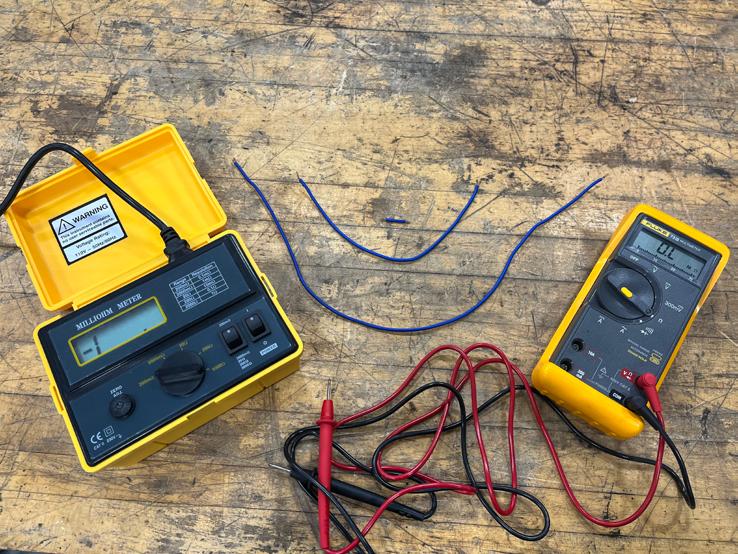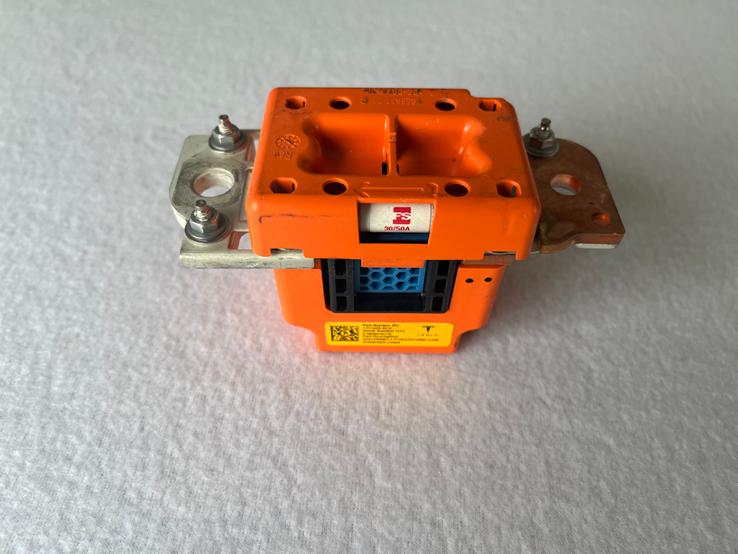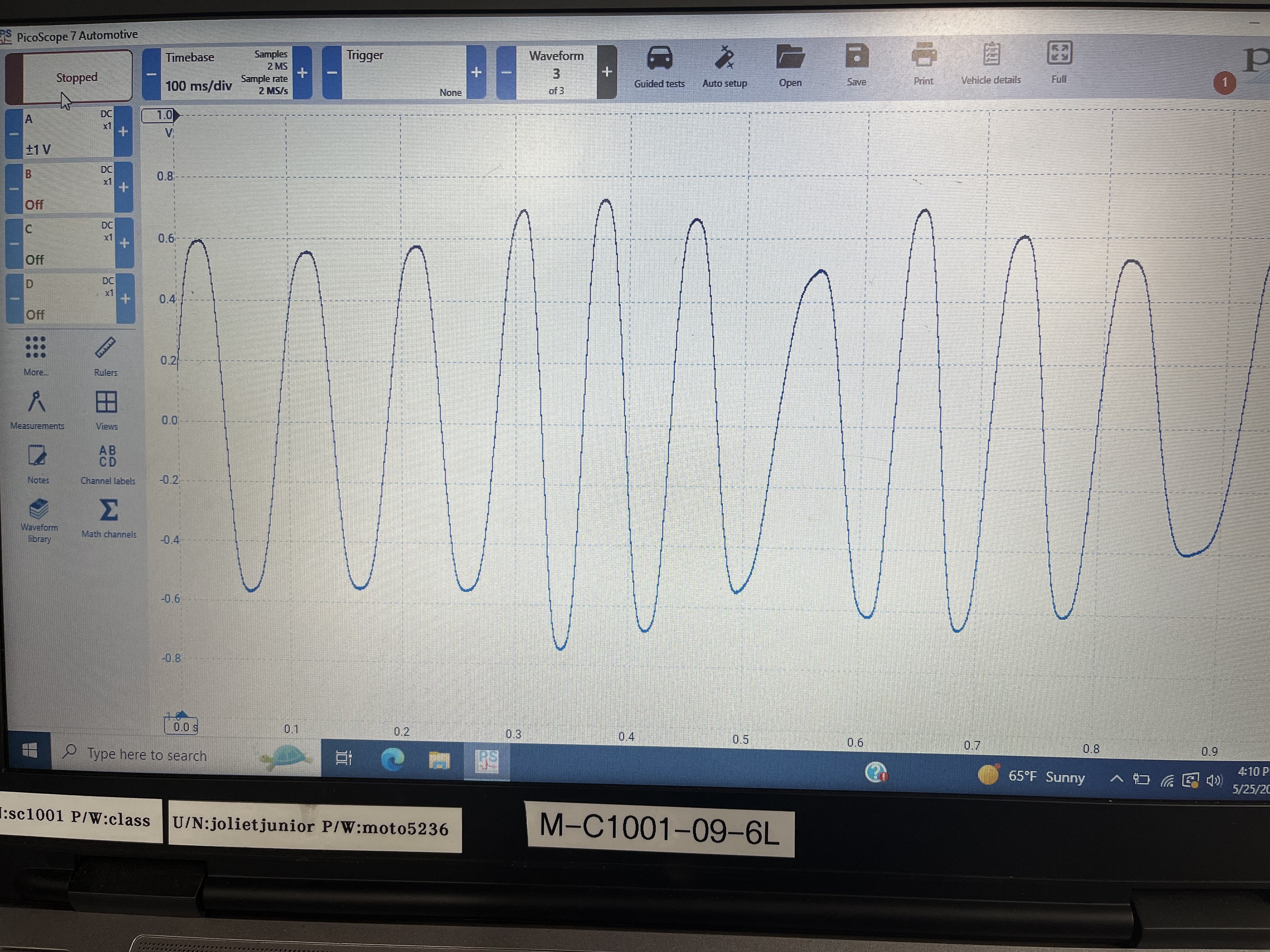
5 minute read
August 2024 Hybrid & Electric Vehicle Corner
by NACATNews
By Curt Ward, Professor at Joliet Junior College
Adding Hybrid and Electric Vehicle Technology to a Basic Electrical Class
As I write this article, the summer instructor conference schedule is nearly complete. I have enjoyed seeing many of you during my travels. A question that was frequently asked during, or after, my presentations was: How can I add high-voltage electricity and components to our existing curriculum? This is a great question and an excellent way to add hybrid and battery electric vehicle technology materials to the existing classes and increase the interest level in the topic at the same time. I believe the basic electrical classes are a great place to start adding hybrid and electric vehicle content. In this article I will share some ideas and concepts that will help begin the process.
Every basic electrical class covers the measurements of volts, amperes, and ohms. When covering ohms, introduce milliohms at the same time. The students will find it very interesting to see how differently a CAT III multimeter (set to ohms) and milliohm meter will measure the resistance of various lengths of stranded 14-gauge wire. The items shown in photo #1 are used in the milliohm measurement lab (See Photo #1 – Milliohm Meter). Although the measured resistance difference will have little impact on the diagnosis of a tail-light circuit, it makes a major difference when trying to identify a concern with the stator windings in a drive motor.

Every basic electrical class covers the measurements of volts, amperes, and ohms. When covering ohms, introduce milliohms at the same time. The students will find it very interesting to see how differently a CAT III multimeter (set to ohms) and milliohm meter will measure the resistance of various lengths of stranded 14-gauge wire. The items shown in photo #1 are used in the milliohm measurement lab (See Photo #1 – Milliohm Meter). Although the measured resistance difference will have little impact on the diagnosis of a tail-light circuit, it makes a major difference when trying to identify a concern with the stator windings in a drive motor.
During the discussion of circuit protection, the operation and diagnosis of fuses, relays, PTC devices, and fusible links are covered. An excellent way to add high-voltage technology to the conversation is to include the topic of pyro fuses (See Photo #2 – Tesla Model S Pyro fuse). These circuit protection devices can be found in a high-voltage battery or the disconnect plug. The pyrotechnic materials used in the fuses are like what is used in an airbag module and ensure the high-voltage circuit is opened rapidly in the event of a short circuit or an airbag deployment.

The topic of AC electricity has almost disappeared from the basic electrical class. Other than a brief mention of AC ripple voltage when diagnosing an alternator output concern, it is hardly mentioned. The operation of electric drive motors is a great way to make this topic relevant to the class. The use of a permanent magnet trainer and an oscilloscope is a great way to help our students visualize the difference between AC and DC electricity (See Photo #3 – Trainer and Photo #4 – Scope pattern on the facing page). The single waveform generated on the oscilloscope shows the transition between positive and negative voltage and the total energy potential of the circuit. The same principles can also be applied to brushless AC blower motors and fuel pumps, which are becoming more common.


Lastly, students are always interested in discussions related to powertrain torque and horsepower. During these discussions, include topics such as kilowatts (kW), newton meters (Nm), and kilowatt hours (kWh) and how they are used to measure electric motor power output, torque, and high-voltage battery storage capacity. Make some side-by-side comparisons between electric and internal combustion engine vehicles. The students will be amazed to see how strong an electric motor performs.
None of the suggested ideas or concepts require the program to invest in an electric vehicle. With a relatively small investment in a milliohm meter, and pyro fuse and blowing the dust off the old permanent magnet trainer, the basic electrical class now includes some of the fundamentals that would be covered in a hybrid or electric vehicle class.
I will finish this article with the same offer I make after each of my presentations. If you are interested in getting started in the process of adding hybrid and electric vehicles to your curriculum or want more information, please feel free to reach out. I am more than willing to sit down in-person or online and share my experiences. Are you looking for a classroom textbook? Reach out to Pearson and ask for a review copy of the all-new Electric and Hybrid Electric Vehicle text that Jim Halderman and I co-authored. It is a comprehensive text covering all the latest information on the subject. Continued From Page 18



